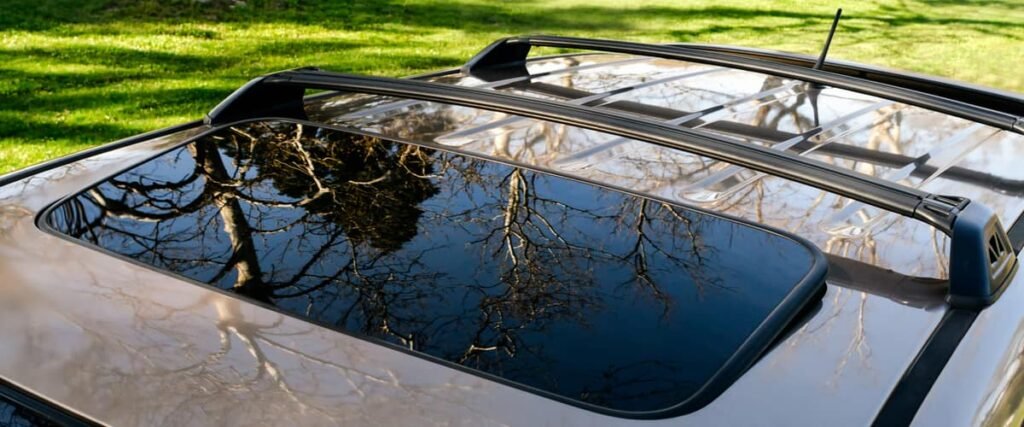Moonroof vs Sunroof
Evolution of Automotive Roofs
The evolution of automotive roofs mirrors the societal and technological changes throughout the 20th century. From the open-air carriages of the early 1900s to the closed-body cars post-World War I, the industry adapted to economic, safety, and consumer preferences. The rise of enclosed vehicles was driven by factors such as increased affordability, weather protection, and a shift towards more practical transportation.
During the post-war period, the popularity of convertibles reached its peak in the 1950s and 60s. Convertibles, with their retractable tops, became a symbol of freedom and luxury. However, as the 1970s approached, several factors, including the advent of effective factory air conditioning and stringent government regulations on rollovers, led to a decline in convertible models. Auto manufacturers responded to changing consumer preferences by focusing on safety, fuel efficiency, and enclosed vehicle designs.
Revival of Sunroofs and Moonroofs
The decline in convertibles created a void in the market, leading to the resurgence of interest in sunroofs and moonroofs. These roof features offered a compromise between the open-air experience of convertibles and the practicality of closed-body cars. Manufacturers responded to this demand by incorporating innovative designs and materials, transitioning from solid panels to glass or acrylic constructions.
Moonroof vs Sunroof
The decline in convertibles created a void in the market, leading to the resurgence of interest in sunroofs and moonroofs. These roof features offered a compromise between the open-air experience of convertibles and the practicality of closed-body cars. Manufacturers responded to this demand by incorporating innovative designs and materials, transitioning from solid panels to glass or acrylic constructions.
Benefits and Drawbacks of Moonroofs
Moonroofs, characterized by their larger size and sliding functionality, offer a unique driving experience. The transparent panel, often tinted, provides an infinite view of the sky, even when closed. The feeling of being in a convertible without the risk of sunburn or hair disturbance adds to the appeal. Moreover, the visual satisfaction they bring and the potential enhancement of a vehicle’s resale value contribute to their popularity.
However, moonroofs come with their drawbacks. The cost of installation and repairs can be relatively high, impacting the overall expense of owning a vehicle. Mechanical assemblies for retractable sunshades and panels may reduce headroom, affecting the comfort of taller passengers. Additionally, the larger size of moonroofs and their added weight might influence a vehicle’s handling and fuel economy. Concerns about potential leakage from bad seals or clogged drain tubes add to the maintenance considerations.
Sunroof Advantages and Disadvantages (Moonroof vs Sunroof)
Sunroofs, known for their versatility and affordability compared to moonroofs, offer several advantages. When open, they provide improved views of the surroundings, increased airflow, and better cell phone reception. The added security they offer, compared to fabric convertible tops or glass moonroofs, enhances their appeal. Sunroofs are generally less expensive to install and repair, making them a practical option for budget-conscious consumers.
However, sunroofs are not without their drawbacks. The noise generated from air turbulence when open can be a concern for some drivers. When closed, solid panels block the view of the sky, limiting the open-air feel. The necessity to store a removed sunroof in the trunk can be inconvenient, and there’s a potential for leakage from bad seals, similar to moonroofs.

Sunroof and Moonroof Installation (Moonroof vs Sunroof)
For those whose vehicles lack these features, the aftermarket offers do-it-yourself kits and specialty shops that can add either a sunroof or moonroof, depending on the vehicle’s make, model, and year. However, caution is strongly advised. The roof of any vehicle is a crucial structural component, and cutting into it weakens the entire body assembly. This is particularly true when dealing with cross-support beams welded to the underside of a roof panel.
Installing a power sliding moonroof requires additional wiring, electronics, relays, and possibly extensive body repairs. Therefore, it’s recommended to leave such modifications to professionals. However, for those willing to attempt a DIY installation of a pop-up sunroof, following specific steps is crucial. This includes measuring the roof accurately, wearing essential eye protection, removing trim and headliner, carefully cutting along the template, and installing the sunroof panel into the assembly.
Maintenance Tips for Sunroofs and Moonroofs
To ensure the longevity and optimal performance of sunroofs and moonroofs, regular maintenance is essential. Cleaning the tracks regularly, lubricating moving parts with dry lube, and cleaning drain channels are crucial steps. Prevention of issues, such as leakage, can be achieved by cleaning drain channels and seals annually. Using a soft one-eighth-inch plastic tube or pipe cleaner to clear the drain tube openings helps maintain proper functionality.
In conclusion, while sunroofs and moonroofs provide an enhanced driving experience, their benefits come with maintenance responsibilities. Whether enjoying the infinite sky view. Here is a fruitful text on Moonroof vs Sunroof .

